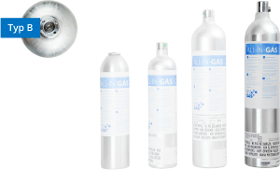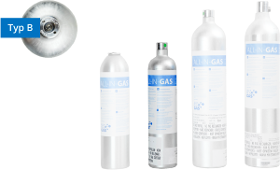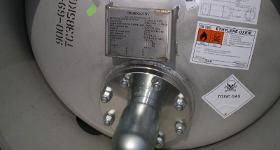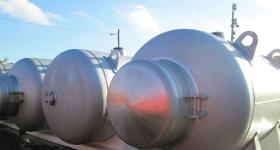- europages
- >
- COMPANIES - SUPPLIERS - SERVICE PROVIDERS
- >
- hydrogen chloride
Results for
Hydrogen chloride - Import export

SCANDINAVIAN CHEMICALS INTERNATIONAL AB
Sweden
Ammonium chloride, a byproduct of sodium bicarbonate production, contains 24% to 26% Nitrogen and 65% Chlorine. It is also known as Sal Ammoniac, the salt of ammonia and hydrogen chloride. In its pure form, it is crystalline salt, white, but easy to caking. To avoid this phenomenon, it can also be granulated to Granule, which is hard to caking and easy to store. This compound is highly water-soluble and mildly acidic and can be used as a nitrogen fertilization source (corresponding to 90 percent of ammonium chloride production worldwide) in crops, especially for Wheat and Rice
Request for a quote
SUN CHEMICAL - COLORS & EFFECTS NETHERLANDS B.V
Netherlands
Hydrochloric Acid 33% (HCl 33%) is a colourless transparent liquid. It is an aqueous solution of hydrogen chloride. It is a strong and highly corrosive acid which has a distinctive pungent odor. It is water and alcohol soluble but insoluble in hydrocarbons. It is an extremely important industrial chemical.
Request for a quote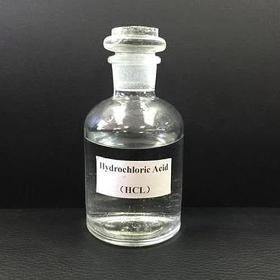
SUN CHEMICAL - COLORS & EFFECTS NETHERLANDS B.V
Netherlands
Hydrochloric Acid 33% (HCl 33%) is a colourless transparent liquid. It is an aqueous solution of hydrogen chloride. It is a strong and highly corrosive acid which has a distinctive pungent odor. It is water and alcohol soluble but insoluble in hydrocarbons. It is an extremely important industrial chemical.
Request for a quote
KNIGHT OPTICAL (UK) LTD
United Kingdom
Gas Detection Systems use Interference Bandpass Filters to identify the emission of a type of gas. Different gases emit at a specific wavelength which makes it identifiable when using a relevant Interference Bandpass Filter. These wavelengths are: Carbon Monoxide (CO) @ 4.73μm Nitric Oxide (NO) @ 5.24μm Nitrogen Dioxide (NO₂) @ 6.17μm Sulphur Dioxide (SO₂) @ 7.42μm Hydrogen Chloride (HCl) @ 3.55μm Carbon Dioxide (CO₂) @ 10.7μm Knight Optical provide a wide range of interference bandpass filters that can be used with gas detection. The Interference Bandpass Filters would be need to transmit in the infrared region. These would be a customised item, which we are very experienced in. We provide narrow, standard, broadband and extra broadband filters with a high optical density of 4 as standard, however this can be customised for you. For more information read PDF
Request for a quote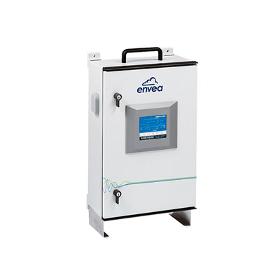
ENVEA
France
Offers excellent performance for multigas measurements in dry sampling, including HCl, HF, NO, NO2, N2O, SO2, CO, CH4, TOC, CO2 and O2. MultiGas NDIRGFC analyzer (NonDispersive Infrared Gas Filter Correlation) measuring up to ten gases simultaneously, including Nitrogen Oxide (NO), Nitrogen Dioxide (NO2), Sulphur Dioxide (SO2), Carbon Monoxide (CO), even Hydrogen Chloride (HCl) and Hydrogen Fluoride (HF). • process optimization and environmental compliance • measurement of dry and corrosive samples • fast and simultaneous measurements of up to 10 gases • dry basis measurement • automatic cross interference correction
Request for a quote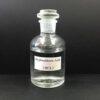
OEN CHEMICALS GMBH
Austria
Chemical Appearance Hydrochloric Acid 33% (HCl 33%) is a colourless transparent liquid. It is an aqueous solution of hydrogen chloride. It is a strong and highly corrosive acid which has a distinctive pungent odor. It is water and alcohol soluble but insoluble in hydrocarbons. It is an extremely important industrial chemical. Chemical Applications and Strengths Hydrochloric Acid 33% (HCl 33%) is an extremely efficient chemical compound and therefore, has many industrial applications. Its main applications and strengths are: It is used in the stimulation of petroleum wells. Stimulation process involves the removal of rust, scales, and undesirable carbonate deposits in oil wells. This enhances the flow of crude oil or gas to the wells. It is used in the manufacture of dyes, phenols, and plastics It is used to produce chemical intermediates like FeCl3, ZnCl2, AlCl3 and many more. It is used as a cleaning agent for household, commercial, and industrial purposes.
Request for a quote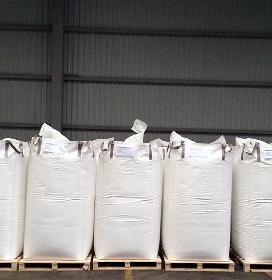
LITCHEMA, UAB
Lithuania
Polyvinylchloride (PVC), is a theermoplastic polymer. It is a vinyl polymer constructed of repeating vinyl groups (ethenyls) having one of their hydrogens replaced with a chloride group. Polyvinylchloride (PVC) is the third most widely produced plastic after polyethylene and polypropylene. PVC is widely used in construction because it is cheap, durable, and easy to assemble. PVC production is expected to exceed 40 million tons by 2016. PVC intrinsic properties make it suitable for a wide variety of applications. It is biologically and chemically resistant, making it the plastic of choice for most household sewerage pipes and other pipe applications where corrosion would limit the use of metal.With the addition of impact modifiers and stabilizers, it becomes a popular material for window and door frames. By adding plasticizers, it can become flexible enough to be used in cabling applications as a wire insulator. It is also used to make vinyl records.
Request for a quote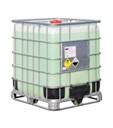
JADAM
Portugal
Hydrochloric acid 31% is a colorless transparent liquid Also known as muriatic acid or spirits of salt It is an aqueous solution of hydrogen chloride with the chemical formula HCl(aq) Physical specifications: HCl is a strong and highly corrosive acid Yellowish liquid with a distinctive pungent odor, soluble in water and dissolves in alcohols but insoluble in hydrocarbons. Stability and reactions: Stable and incompatible with metals, organic materials, alkalis, explosives, epoxies Properties and applications Boiling point / range 50°C Relative density >1123 kg/m3 @20°C food & pharmaceuticals industry chloroalkalies production processes water treatment processes for drinking water and industrial water production of industrial& household chemicals mining industry production of biofuels, oils and lubricants, galvanising and zinc plating textile industry and tanning CAS number 7647-01-0 WE number 231-595-7 Molar mass 36,45 g/mol Customs tariff code 28061000 ADR UN1789
Request for a quote
FUENTE INTERNATIONAL B.V.
Netherlands
A neutralising shampoo that cares especially for bright and ash blond shades. Neutralizes unwanted yellow pigment in hair Works carefully Gives hair a natural shine Aqua, Sodium Trideceth Sulfate, Cocamidopropyl Betaine, Acrylates Copylymer, Disodium Cocoamphodiacetate, Betaine, Citric Acid, Hydrogenated Ethylhexyl Olivate, Sodium Chloride, PEG4 Rapeseedamide, Acid Violet 43, Fragrance, Guar Hydroxypropyltrimonium Chloride, Phenoxyethanol, Sodium Hydroxide, Crambe Abyssinica Seed Oil, Sorbitan Caprylate, Benzophenone4, Hydrogenated Olive Oil Unsaponifiables, Basic Blue 99, Oleyl Alcohol, Phytosterols, Limonene. Lime Refreshing effect Olive oil Provides protection against external influences
Request for a quote
FUENTE INTERNATIONAL B.V.
Netherlands
A neutralising shampoo that cares especially for bright and ash blond shades. Neutralizes unwanted yellow pigment in hair Works carefully Gives hair a natural shine Aqua, Sodium Trideceth Sulfate, Cocamidopropyl Betaine, Acrylates Copylymer, Disodium Cocoamphodiacetate, Betaine, Citric Acid, Hydrogenated Ethylhexyl Olivate, Sodium Chloride, PEG4 Rapeseedamide, Acid Violet 43, Fragrance, Guar Hydroxypropyltrimonium Chloride, Phenoxyethanol, Sodium Hydroxide, Crambe Abyssinica Seed Oil, Sorbitan Caprylate, Benzophenone4, Hydrogenated Olive Oil Unsaponifiables, Basic Blue 99, Oleyl Alcohol, Phytosterols, Limonene. Lime Refreshing effect Olive oil Provides protection against external influences
Request for a quote
INDEPETRO
Iran
Hydrochloric Acid is a corrosive, strong mineral acid with many industrial uses. A colorless, highly pungent solution of hydrogen chloride (HCl) in water, when it reacts with an organic base it forms a hydrochloride salt. With major production starting in the Industrial Revolution, hydrochloric acid is used in the chemical industry as a chemical reagent in the large-scale production of vinyl chloride for PVC plastic, and MDI/TDI for polyurethane. It has numerous smaller-scale applications, including household cleaning, production of gelatin and other food additives, descaling, and leather processing. About 20 million tonnes of hydrochloric acid are produced worldwide annually. It is also found naturally in gastric acid.
Request for a quoteDo you sell or make similar products?
Sign up to europages and have your products listed
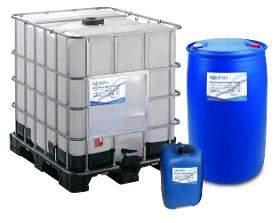
LANXESS
United Kingdom
methyldiethanolamine, Ethanolamine, Triethanolamine, TEA, Monoethanolamine, MEA, Diethanolamine, DEA, Bromine, Calcium carbonate, Chlorine, Fluorine, Hydrogen chloride, Hydrogen fluoride, Hydrogen peroxide, Iodine, Nitric acid, Oxygen, nitrogen and the rare gases, Phosphoric acid, Phosphorus, Sodium carbonate, Sodium hydroxide, Sulfur, Sulfuric acid, Titanium dioxide, Benzene and methylbenzenes, Epoxyethane, Ethylene oxide, Ethylene glycol, Ethanoic acid, Acetic acid, Ethanol, Ethene, Ethylene, Methanal, Formaldehyde, Methanol, Methyl tertiary-butyl ether, Phenol, Propanone, Acetone, Propene, Propylene, Urea, Polymers, Pharmaceuticals, Inorganic chemicals, Miscellaneous Chemicals, Organic chemicals and derivatives, Food and feed additives, Fragrances and aroma chemicals, Dyestuffs and pigments, Coating and Adhesives, Catalysts & Chemical Auxiliary Agents, Agrochemicals
Request for a quote
LANXESS
United Kingdom
acetic anhydride, methyldiethanolamine, Ethanolamine, Triethanolamine, TEA, Monoethanolamine, MEA, Diethanolamine, DEA, Bromine, Calcium carbonate, Chlorine, Fluorine, Hydrogen chloride, Hydrogen fluoride, Hydrogen peroxide, Iodine, Nitric acid, Oxygen, nitrogen and the rare gases, Phosphoric acid, Phosphorus, Sodium carbonate, Sodium hydroxide, Sulfur, Sulfuric acid, Titanium dioxide, Benzene and methylbenzenes, Epoxyethane, Ethylene oxide, Ethylene glycol, Ethanoic acid, Acetic acid, Ethanol, Ethene, Ethylene, Methanal, Formaldehyde, Methanol, Methyl tertiary-butyl ether, Phenol, Propanone, Acetone, Propene, Propylene, Urea, Polymers, Pharmaceuticals, Inorganic chemicals, Miscellaneous Chemicals, Organic chemicals and derivatives, Food and feed additives, Fragrances and aroma chemicals, Dyestuffs and pigments, Coating and Adhesives, Catalysts & Chemical Auxiliary Agents, Agrochemicals
Request for a quote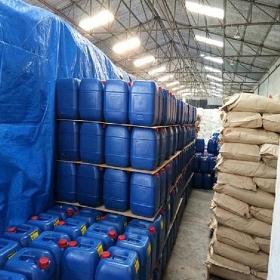
LANXESS
United Kingdom
Ammonia, methyldiethanolamine, Ethanolamine, Triethanolamine, TEA, Monoethanolamine, MEA, Diethanolamine, DEA, Bromine, Calcium carbonate, Chlorine, Fluorine, Hydrogen chloride, Hydrogen fluoride, Hydrogen peroxide, Iodine, Nitric acid, Oxygen, nitrogen and the rare gases, Phosphoric acid, Phosphorus, Sodium carbonate, Sodium hydroxide, Sulfur, Sulfuric acid, Titanium dioxide, Benzene and methylbenzenes, Epoxyethane, Ethylene oxide, Ethylene glycol, Ethanoic acid, Acetic acid, Ethanol, Ethene, Ethylene, Methanal, Formaldehyde, Methanol, Methyl tertiary-butyl ether, Phenol, Propanone, Acetone, Propene, Propylene, Urea, Polymers, Pharmaceuticals, Inorganic chemicals, Miscellaneous Chemicals, Organic chemicals and derivatives, Food and feed additives, Fragrances and aroma chemicals, Dyestuffs and pigments, Coating and Adhesives, Catalysts & Chemical Auxiliary Agents, Agrochemicals
Request for a quoteResults for
Hydrogen chloride - Import exportNumber of results
21 ProductsCountries
Category
- Chemical catalysts (3)
- Chemicals - Basic Products & Derivatives (2)
- Cosmetics (2)
- Anhydrides (1)
- Carboxylic and anhydric acids (1)
- Chemical and pharmaceutical industry - machinery and equipment (1)
- Import-export - chemicals and pharmaceuticals (1)
- Measurement and regulation equipment and instruments - output and flow (1)
- Optical measuring equipment (1)
- Polyethylene (1)
